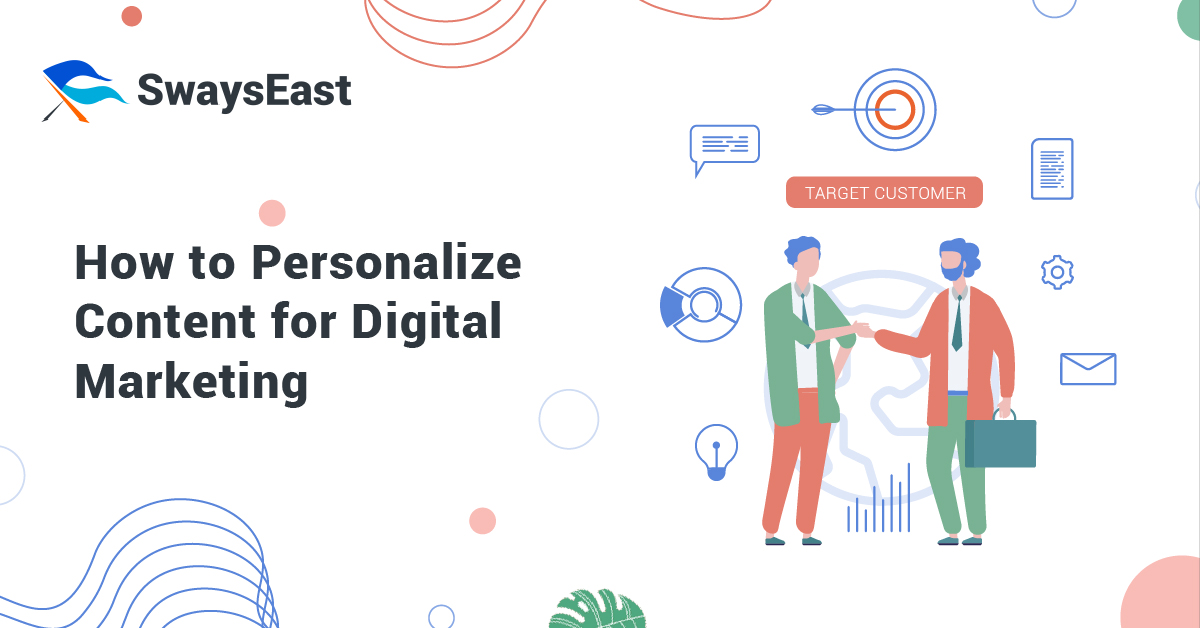Content personalization is the process of customizing various forms of content to specific target audiences based on the information you have about them. Accessible data like location, search queries, purchase history, site visits, or ads clicked on is compared to a set of variables you’ve set up. These include gender, age, the device used, date and time of day, sessions behavior, or visitor frequency. Done right, content personalization enables marketers to differentiate content at different stages of the buying funnel, making it hyper-relevant to the right customer at the right time.
Benefits of Content Personalization
1. Conversion
When a company sends the right message to the right prospects at the right moment, the chances of conversion are higher than when a customer receives an irrelevant message, especially at an inappropriate time. Creating a tailored experience increases the possibility of turning leads into paying customers.
2. Customer Comprehension
When content is personalized, it conveys the message that the brand is making an effort to understand customers’ specific needs and expectations which makes it easier to encourage them to try out the product or service offering.
3. Customer Engagement and Feedback
Quid pro quo: Give customers something they find useful or relevant or valuable – and they will willingly provide the information you need from them including positive reviews and great feedback.
4. Brand Affinity and Social Sharing
Customers with personalized, positive user experiences are more likely to tell their friends and relatives about it – whether by word of mouth or on social media which can help widen a brand’s reach or increase brand reputation.
5. Lead Nurturing
If sales and marketing teams focus on finding out the needs and expectations of certain leads, conversion is more likely to happen. Make potential customers feel that they matter – and that you’re not just after making a sale – and you can easily push those leads further down the pipeline.
Frameworks for Content Personalization
There are five ways to personalize content for digital marketing success.
1. Segment-Specific Personalization
Used by 68% of marketers, this is a popular way to personalize content by targeting customer variables such as gender, age range, job title, location, and more. Insights such as preferences, interests, behavior, past interactions with your brand, or online activities are also a good gauge for creating customized messages that are perfectly matched to your target customers.
Because segment-specific content is relevant to a large audience, it can be highly shareable and can quickly catch your market’s attention. It may not be specific enough for individual leads, but they can bring new visitors and leads to your site.
2. Persona-Based Personalization
A persona-based personalization strategy is the process of content segmentation using characteristics that are unique to each persona, which can be useful when you’re trying to engage specific sales accounts. You’ll need to know exactly who your buyer is, what challenges and problems they are encountering, what excites them, what turns them off – everything that is specifically about them. And then ensure that your content resonates with them in a meaningful way.
3. Customer Journey-Based Personalization
Customer journey maps are crucial for transforming broad-based content into personalized content that addresses each stage of the journey. The more targeted the message, the faster the progress to purchasing your product or service. This content will relate to your target customers’ pain points for each step of the buying process.
4. Individual-Specific Personalization
Today’s digital consumers no longer accept one-size-fits-all content experiences. The only way to truly personalize the customer experience is to a segment of one, optimized in real-time. This is based on the actions and preferences inextricably tied to that specific customer’s identity.
This is a time-intensive work or one that would require machine learning and AI technology, so it is best to use this for creating lead-specific content for existing and loyal customers of your brand.
5. Intent-Specific Personalization
This is personalized content based on purchase intent. Using this type of content personalization gives you a clear competitive advantage over your competitors, as you can be the first vendor to engage with leads. The key is finding out the questions being asked or topics being researched so you can create intent-specific content that answers their questions or help them with their decision-making process.
Are there any prerequisites for content personalization?
Before you can personalize content, you need data about your website visitors. While certain data is automatically available, other important information will come from customers. In fact, the campaign’s success depends on how effectively businesses gather and measure data.
You also need the right tools and technology for effective content personalization and analysis. This, in turn, will transform a simple customer interaction into a unique and engaging experience with your brand. SwaysEast can help you with content personalization to fortify your digital marketing efforts.

